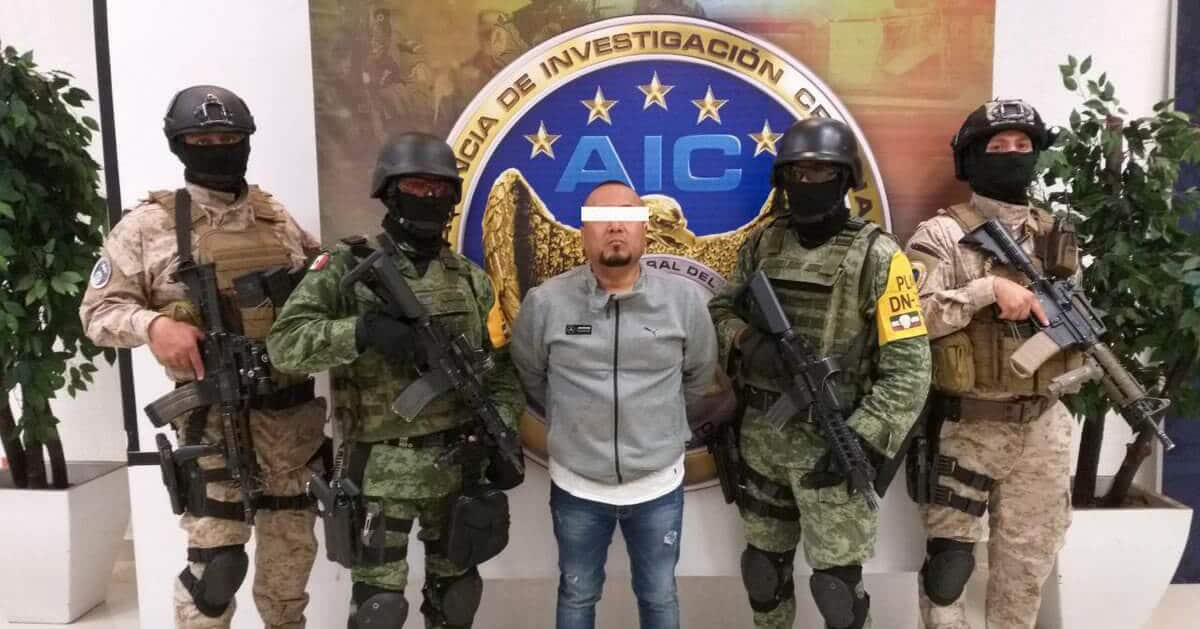The arrest of Santa Rosa de Lima Cartel boss, “El Marro,” was welcomed by Mexico’s President Andrés Manuel López Obrador, who was in need of a security win. But this capture threatens to undo the progress made against oil theft and may not quell violence in the country’s most violent state for long.
Originally made up of Guanajuato oil thieves who banded together in order to resist the encroachment of the Jalisco Cartel New Generation (Cartel Jalisco Nueva Generación — CJNG), the Santa Rosa de Lima Cartel (CSRL) is somewhat of an outlier in Mexico’s criminal landscape.
Over the last decade, many of Mexico’s larger, more diversified criminal groups, such as the Zetas, the Gulf Cartel or La Familia Michoacana, fragmented into smaller groups vying for control of lesser slices of the criminal pie and contributing to soaring homicide numbers.
SEE ALSO: Profile of José Antonio Yépez Ortiz, alias ‘El Marro’
The CSRL was arguably the first group to re-establish enough control over a particular area to fight back against a larger, more powerful threat like the CJNG. It did so by relying on two elements: a hyper-localized power base and an unerring focus on oil theft.
The Santa Rosa de Lima Cartel Today and Tomorrow
The CSRL took the name of Santa Rosa de Lima from a town of a few thousand people where José Antonio Yépez Ortiz, alias “El Marro,” was born. It cemented its control over key municipalities such as Celaya, Apaseo el Alto and Apaseo el Grande, all of which offered ready access to oil pipelines.
Despite incursions from the CJNG and repeated government operations, the CSRL retained this local focus. It did enter some smaller-scale operations in the neighboring states of Querétaro and Hidalgo, while also turning to extortion to diversify its sources of revenue.
And while the CJNG is likely to try and rapidly claim these municipalities amid a power vacuum, it is uncertain if the capture of Yépez Ortiz will end the CSRL altogether.
According to El Universal, his father and brother are already vying to lead the group while threatening messages seeking revenge have circulated on social media, claiming to be from the CSRL.
But for Eduardo Guerrero, a security specialist at Lantia Consultores, they are unlikely to succeed. “El Marro was a very skillful, elusive and strategic leader and it seems to me that his replacements — who will certainly be relatives — don’t have the skills he had to keep this organization afloat,” he told the Guardian, adding that the cartel would likely splinter into smaller groups.
No Honor Among Oil Thieves
Early on in his presidency, López Obrador made reining in rampant oil theft a major national security priority. Security forces were deployed to watch over oil installations, a number of important pipelines were closed and alternate means of transporting gasoline were needed as various parts of the country ran out of fuel.
In the strictest sense, this plan appears to have worked. The amount of oil stolen fell sharply in 2019 although the total number of oil theft attempts rose slightly. And Mexico’s national oil company, Petróleos Mexicanos (Pemex), recently reported that oil theft in Guanajuato had dropped by 96 percent in the first half of 2020 compared with 2018.
The trade-off has been that violence in Guanajuato has exploded, as the CSRL and CJNG battled both each other and government forces. The state was Mexico’s most murderous in 2019 and so far in the first half of 2020.
SEE ALSO: The Slow Death of Mexico’s Santa Rosa de Lima Cartel
And progress against oil theft may be all too temporary as the gangs have evolved their techniques. Despite the aforementioned drops in oil theft, theft of liquid petroleum gas has soared in the last year. According to the BBC, the CSRL has taken an active part in gas theft as well as oil theft.
With more scrutiny of oil infrastructure above ground, oil thieves have also been trying to hide their handiwork. In June, the Mexican army reported finding underground hoses moving stolen oil from pipelines in the states of Guanajuato, Hidalgo, Nuevo León and Puebla.
While the government’s focus on the CSRL stripped the group of much of their oil theft revenue, its members are experienced oil thieves who are likely to continue targeting pipelines whether the group remains intact or not. At their height, the CSRL was reportedly extracting millions of liters of oil a month. That kind of expertise does not just go away.
The Future of Guanajuato
Yépez Ortiz was an important contributing factor to the rise in violence in Guanajuato in recent years.
According to La Silla Rota, hitmen who murdered 26 people at a rehabilitation center in the town of Irapuato in July 2020 identified themselves as having been sent by El Marro. In 2017, a potential alliance with the CJNG quickly fell apart after Yépez Ortiz allegedly murdered two of the rival cartel’s emissaries, Mexican security expert David Saucedo told Aristegui Noticias.
His arrest may make a short-term difference in the state, but the dynamics that underpin violence in Guanajuato do not revolve around just one man. While the violence in the state initially rose due to the lure of oil theft, other criminal economies now also play a major part.
Large doses of drugs have been seized in the state in transport north to the United States. Reports of extortion have soared. In 2018, the overwhelmed police force in the town of Irapuato stated it would no longer fight against oil theft or drug trafficking, stating that too many of their own were dying.
It is uncertain how long any grace period granted by Yépez Ortiz’s arrest will last, or whether it will happen at all.
Top photo: courtesy of the Attorney General’s Office of Guanajuato

